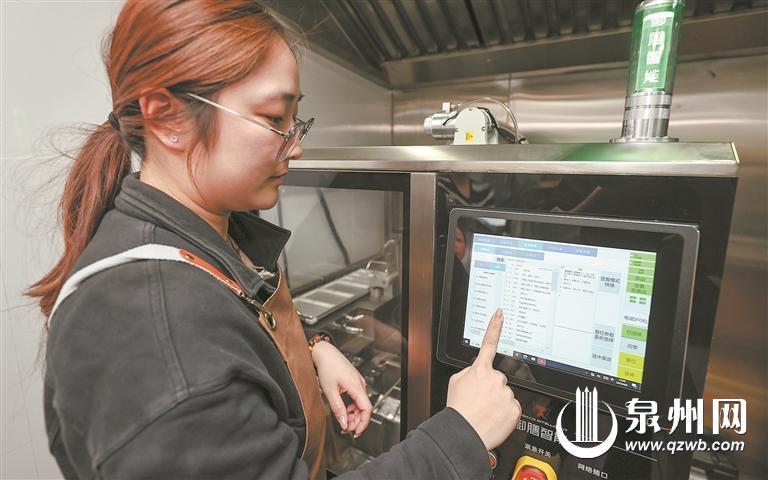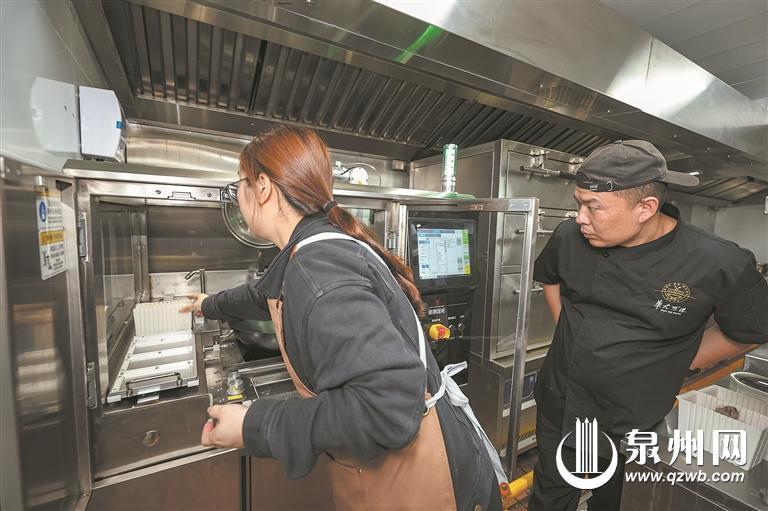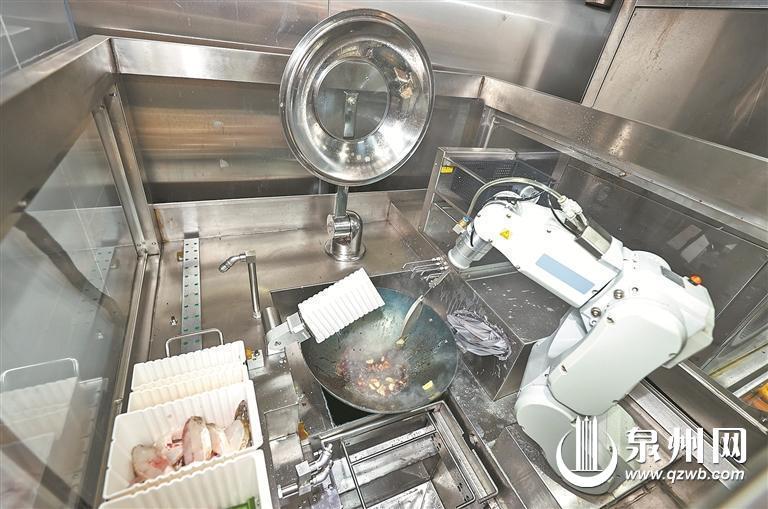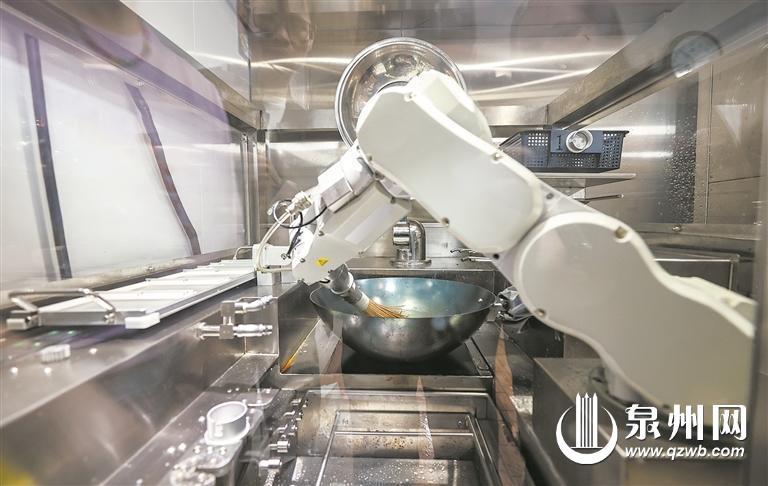- Updates
- News
Quanzhou, April 11 (By Zhang Junlin – Text / Lin Jinfeng – Photos, China Cuisine Association)
A high-tech culinary showdown recently took place at the Konong Experimental Theme Restaurant, located on the Quanzhou campus of Huaqiao University. In a thrilling display of AI-assisted gastronomy, a "digital chef" wielded a robotic arm to grab spice jars and ingredients with precision. The robot cooked a traditional Quanzhou dish—braised mixed fish (炣杂鱼)—within four minutes, matching a human chef preparing the same dish by hand.
This man-vs-machine cook-off marks a new frontier in the fusion of artificial intelligence and traditional Chinese cuisine, led by the Quanzhou Cuisine R&D and Digital Culinary Arts Master Studio. It reflects the growing push to digitise food heritage and culinary processes under the wave of AI innovation.

Selecting the dish and confirming operational steps.

Placing the required ingredients and condiments.

The stir-frying process is smooth and fluid.

The robotic system cleaning the iron wok.

The robot-cooked (left) and hand-cooked versions of "braised mixed fish"—nearly indistinguishable.
1. Digitising Traditional Chinese Cooking
The "digital chef" stands 1.6 metres tall, resembling a boxy cooking station equipped with a glass door. Inside sits an iron wok covered by a transparent lid and heated by an induction cooker, surrounded by sauce containers, ingredient baskets, and kitchen tools. A robotic arm carries out tasks like pouring oil, stir-frying garlic, and simmering sauces—all displayed on a touch panel.
Professor Ding Xin of the National Tourism Teaching Demonstration Centre explains, "Chinese cuisine, at its core, is a sequence of precise actions. We've now converted simple dishes into programmable modules." Parameters such as temperature, timing, and ingredient weights are now data points—for example, blanching vegetables is no longer a matter of guesswork but a calculation of seconds and degrees.
The first fully digitised dish: braised mixed fish—a regional Quanzhou classic. It took over five iterations to convert every detail into code. Despite temperature limitations of induction heating, the outcome retains the dish's authentic flavour.
To date, the digital chef holds over 50 recipes, mostly from Cantonese, Sichuan, Jiangxi, and Hunan cuisines. Now, Quanzhou cuisine joins the AI era, with more dishes to be standardised and encoded. The system supports 24 cooking techniques, including stir-frying, steaming, simmering, and boiling.
2. From Culinary Classroom to Industry Empowerment
This robotic chef was introduced by the Quanzhou Cuisine R&D and Digital Culinary Arts Master Studio, led by Professor Wang Jingqiang from the School of Tourism. The studio was honoured as one of only ten "Master Studios" in Quanzhou in 2024.
Traditionally, students in hotel management focused on high-end hospitality. Now, with innovations like the digital chef, their training extends into culinary R&D, nutrition, and smart meal design. In the future, users may input health reports into the system, allowing for personalised meals tailored to individual dietary needs.
Wang Jingqiang emphasises that digitisation enables a new model of culinary heritage transmission. Previously passed down through oral traditions, Quanzhou dishes like ginger-braised black chicken or vinegar pork trotters are now being documented in a digital heritage database.
This digitised knowledge will make it possible to recreate authentic Quanzhou flavours anywhere in the world—a concept Wang describes as "cloud-based culinary heritage."
Moreover, the digital chef will drive innovations in ingredient supply chains. Prepped ingredients must match coded recipes precisely, likely boosting the demand for standardised semi-processed ingredients and accelerating the clean food supply industry.
3. Tradition Meets AI: Collaboration, Not Replacement
Despite its promise, the robot is not here to replace chefs. "We still rely on professional expertise to develop and test recipes," Wang says. Every program requires human insight—from ingredient prep to sauce blending and the sequencing of steps.
Reporters observed that human chefs play a crucial role in configuring the system. "Digital Chef" depends on their mastery to fine-tune flavours, convert techniques into code, and ensure consistency. Not all dishes are suitable for automation—some still rely heavily on manual artistry.
However, the robot relieves chefs from repetitive tasks, allowing them to focus on creative innovation. It acts as a digital assistant, supporting chefs in creating new dishes, enhancing productivity, and paving the way for a future where tradition and technology cook in harmony.
